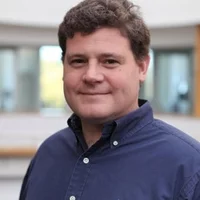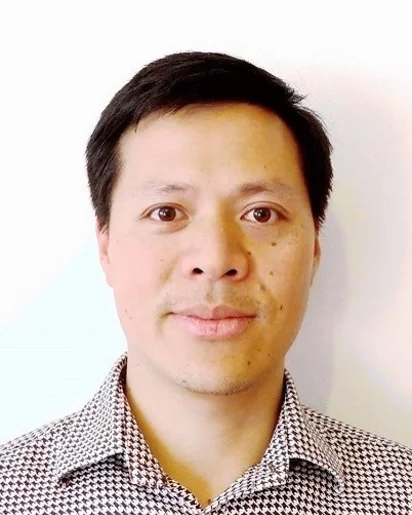Biography
Xinhua Xie is a staff scientist in the Laboratory of Nonlinear Optics at the Paul Scherrer Institute. He received his BSc in Physics from University of Science and Technology of China (Hefei, Anhui) in 2001 and MSc in Physics from Shanghai Institute of Optics and Fine Mechanics (Shanghai) in 2004. After finishing his master degree, he moved to Vienna and obtained his PhD degree in Physics from the Photonics Institute at TU Wien in late 2007. Afterwards, he worked as a postdoctoral researcher and later became an independent principal investigator at TU Wien and Vienna University before he joined SwissFEL at the Paul Scherrer Institute.
Institutional Responsibilities
Installation, commissioning and maintenance of SwissFEL experimental lasers, laser infrastructure and corresponding diagnostics. This includes support for experimental laser operation at SwissFEL, contributions to the development of advanced diagnostics and secondary laser sources with wavelength ranging from XUV to THz, participation in the user operation at SwissFEL, as well as performing independent researches on X-ray spectroscopy of atoms and molecules.
Scientific Research
Xinhua Xie's current scientific research is focused on ultrafast spectroscopy of electron and nuclear dynamics in atoms and molecules with ultrashort laser and X-ray pulses to reveal the importance of electron and nuclear dynamics in light-induced atomic and molecular processes.
Selected Publications
For an extensive overview we kindly refer you to our publication repository DORA.
Frustrated double ionization of argon atoms in strong laser fields. Seyedreza Larimian, Sonia Erattupuzha, Andrius Baltuška, Markus Kitzler-Zeiler, and Xinhua Xie. Phys. Rev. Research 2, 013021 (2020).
We demonstrate kinematically complete measurements on frustrated double ionization of argon atoms in strong laser fields with a reaction microscope. We found that the electron trapping probability after strong-field double ionization is much higher than that after strong-field single ionization, especially in the case of high laser intensity. The retrieved electron momentum distributions of frustrated double ionization show a clear transition from the nonsequential to the sequential regime, similar to those of strong-field double ionization. The dependence of electron momentum width on the laser intensity further indicates that the second released electron has a dominant contribution to frustrated double ionization in the sequential regime.
Subfemtosecond Tracing of Molecular Dynamics during Strong-Field Interaction. Václav Hanus, Sarayoo Kangaparambil, Seyedreza Larimian, Martin Dorner-Kirchner, Xinhua Xie, Markus S. Schöffler, Gerhard G. Paulus, Andrius Baltuška, André Staudte, and Markus Kitzler-Zeiler. Physical Review Letters, 123, 263201(2019).
We introduce and experimentally demonstrate a method where the two intrinsic timescales of a molecule, the slow nuclear motion and the fast electronic motion, are simultaneously measured in a photoelectron photoion coincidence experiment. In our experiment, elliptically polarized, 750 nm, 4.5 fs laser pulses were focused to an intensity of 9e14 W/cm2 onto H2. Using coincidence imaging, we directly observe the nuclear wave packet evolving on the 1sσg state of H2+ during its first round-trip with attosecond temporal and picometer spatial resolution. The demonstrated method should enable insight into the first few femtoseconds of the vibronic dynamics of ionization-induced unimolecular reactions of larger molecules.
Laser-induced dissociative recombination of carbon dioxide. Hongtao Hu, Seyedreza Larimian, Sonia Erattupuzha, Jin Wen, Andrius Baltuška, Markus Kitzler-Zeiler, and Xinhua Xie. Phys. Rev. Research 1, 033152 (2019).
We experimentally investigate laser-induced dissociative recombination of CO2 in linearly polarized strong laser fields with coincidence measurements. Our results show laser-induced dissociative processes with electron recombination after laser-induced double ionization. After double ionization, one electron can recombine to one of the two ionic fragments during laser-induced molecular dissociation. Our measurements reveal that the recombination probability of the second ionized electron is three times as high as that of the first ionized electron.
Disentangling Intracycle Interferences in Photoelectron Momentum Distributions Using Orthogonal Two-Color Laser Fields. Xinhua Xie, Tian Wang, ShaoGang Yu, XuanYang Lai, Stefan Roither, Daniil Kartashov, Andrius Baltuška, XiaoJun Liu, André Staudte, and Markus Kitzler. Physical Review Letters 119, 243201 (2017).
We use orthogonally polarized two-color (OTC) laser pulses to separate quantum paths in the multiphoton ionization of Ar atoms. Our OTC pulses consist of 400 and 800 nm light at a relative intensity ratio of 10∶1. We find a hitherto unobserved interference in the photoelectron momentum distribution, which exhibits a strong dependence on the relative phase of the OTC pulse. Analysis of model calculations reveals that the interference is caused by quantum pathways from nonadjacent quarter cycles.
Coincidence spectroscopy of high-lying Rydberg states produced in strong laser fields. Seyedreza Larimian, Sonia Erattupuzha, Christoph Lemell, Shuhei Yoshida, Stefan Nagele, Raffael Maurer, Andrius Baltuška, Joachim Burgdörfer, Markus Kitzler, and Xinhua Xie. Physical Review A 94, 033401 (2016).
We demonstrate the detection of high-lying Rydberg states produced in strong laser fields with coincidence spectroscopy. Electron emission after the interaction of strong laser pulses with atoms and molecules is measured together with the parent ions in coincidence measurements. These electrons originate from high-lying Rydberg states with quantum numbers from n∼20 up to n ≲ 120 formed by frustrated field ionization. Ionization rates are retrieved from the measured ionization signal of these Rydberg states. Simulations show that both tunneling ionization by a weak dc field and photoionization by blackbody radiation contribute to delayed electron emission on the nano- to microsecond scale. Furthermore, the dependence of the Rydberg-state production on the ellipticity of the driving laser field indicates that such high-lying Rydberg states are populated through electron recapture. The present experiment provides detailed quantitative information on Rydberg production in strong-field interaction.


